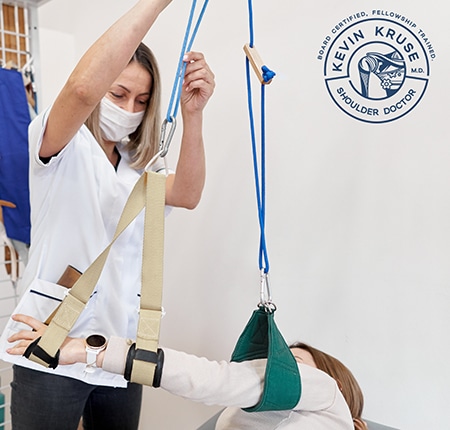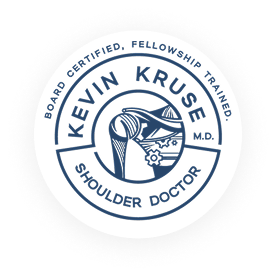What Is Partial Shoulder Replacement Surgery?
Partial shoulder replacement surgery, also known as hemiarthroplasty, is a surgical procedure designed to treat specific shoulder joint problems by replacing only the damaged portion of the joint, rather than the entire joint. This targeted approach is an alternative to total shoulder replacement and is ideal for certain conditions that don’t require full joint replacement.
In this article, we’ll explore what partial shoulder replacement entails, how it compares to total shoulder replacement, and the types of conditions it is used to treat. By the end, you’ll have a clear understanding of this surgical option, its benefits, risks, and what recovery might involve.
Understanding Partial Shoulder Replacement Surgery
The shoulder is a ball-and-socket joint where the humeral head (the ball) of the upper arm bone fits into the glenoid cavity (the socket) of the shoulder blade. In a partial shoulder replacement, the damaged humeral head is replaced with an artificial implant, leaving the socket intact.
This procedure is typically less invasive than a total shoulder replacement and focuses on alleviating pain and restoring mobility while preserving as much of the natural anatomy as possible.
How Does It Differ From Total Shoulder Replacement?
Partial Shoulder Replacement (Hemiarthroplasty)
- Only the humeral head is replaced with a prosthetic implant.
- The natural glenoid (socket) is left untouched, provided it is still healthy and functional.
- It is most effective for conditions where the damage is isolated to the humeral head.
Total Shoulder Replacement
- Both the humeral head and the glenoid cavity are replaced.
- Prosthetic components include both a new ball and socket.
- Total replacement is recommended for more extensive damage, particularly in cases of severe arthritis or irreparable rotator cuff injuries.
See: Total Shoulder Replacement and Reverse Shoulder Replacement
Key Differences: Partial shoulder replacement is less invasive, preserves more of the natural joint structure, and often has a quicker recovery time compared to total shoulder replacement. However, it is not suitable for everyone.
Conditions Treated With Partial Shoulder Replacement
Partial shoulder replacement is recommended for patients with specific shoulder conditions, including:
1. Osteoarthritis
- When arthritis damages the cartilage of the humeral head but leaves the socket relatively unaffected, partial replacement can relieve pain and restore mobility.
2. Avascular Necrosis
- A condition where the blood supply to the humeral head is compromised, causing the bone to weaken and collapse. Replacing the humeral head can alleviate pain and restore function.
3. Fractures
- Severe fractures of the humeral head, particularly those where reconstruction is not viable, may be treated with a hemiarthroplasty.
4. Post-Traumatic Arthritis
- Arthritis caused by previous shoulder injuries may affect only the humeral head, making partial replacement a viable option.
Benefits of Partial Shoulder Replacement
Opting for a partial shoulder replacement can offer several advantages over total replacement, including:
- Preservation of Natural Anatomy: The socket remains intact, allowing for a more natural range of motion.
- Reduced Surgical Trauma: With fewer components replaced, the procedure is less invasive.
- Shorter Recovery Time: Many patients experience faster rehabilitation compared to total shoulder replacement.
- Targeted Pain Relief: By addressing only the damaged area, the surgery effectively reduces pain in the joint.
The Surgical Procedure
Understanding the steps involved in partial shoulder replacement can help demystify the process. Here’s an overview:
- Preoperative Preparation:
- Imaging tests like X-rays or MRIs help surgeons evaluate the extent of damage.
- A detailed medical history and physical exam are conducted to ensure the patient is a good candidate.
- Anesthesia:
- General or regional anesthesia is administered to ensure a pain-free experience.
- Procedure Steps:
- An incision is made in the shoulder to access the joint.
- The damaged humeral head is removed and replaced with a prosthetic implant.
- The implant is secured, and the incision is closed.
- Post-Surgery:
- A sling is used to support the arm during the initial recovery phase.
The entire procedure typically lasts 1-2 hours, and most patients can return home within a day or two.
Recovery and Rehabilitation
 Recovering from a partial shoulder replacement involves several stages. Here’s what to expect:
Recovering from a partial shoulder replacement involves several stages. Here’s what to expect:
Immediate Postoperative Period
- Pain Management: Medication is prescribed to manage discomfort.
- Arm Support: A sling is worn to protect the shoulder during the healing process.
Physical Therapy
- Week 1-2: Gentle movements to prevent stiffness and promote circulation.
- Weeks 3-6: Gradual strengthening exercises to rebuild shoulder function.
Full Recovery
- Most patients regain full range of motion and strength within 3-6 months.
- Adhering to physical therapy is crucial for a successful outcome.
Risks and Considerations
While partial shoulder replacement is generally safe, there are potential risks and considerations to keep in mind:
- Infection: As with any surgery, there’s a small risk of infection.
- Implant Issues: Prosthetic components may wear out over time.
- Limited Suitability: This procedure may not be effective for conditions involving the glenoid cavity.
- Persistent Pain: In rare cases, patients may continue to experience discomfort.
Regular follow-ups with your orthopedic surgeon are important to monitor the implant and address any complications early.
FAQs About Partial Shoulder Replacement
- Who is a candidate for partial shoulder replacement?
Patients with isolated damage to the humeral head, such as osteoarthritis or fractures, are ideal candidates. A thorough evaluation by an orthopedic surgeon is necessary.
- How long does the implant last?
Most prosthetic implants last 10-20 years, depending on factors like activity level and overall joint health.
- Is the recovery process painful?
While some discomfort is expected after surgery, pain is manageable with medications and gradually decreases during recovery.
- Can I return to sports after surgery?
Many patients resume low-impact sports, such as swimming or golf, within a few months. High-impact activities may not be recommended.
- What happens if the glenoid cavity deteriorates later?
If the glenoid cavity becomes damaged in the future, a revision surgery to a total shoulder replacement may be necessary.
Recommended Resources
- American Academy of Orthopaedic Surgeons (AAOS): https://orthoinfo.aaos.org
A trusted source for detailed orthopedic information. - Johns Hopkins Medicine: https://www.hopkinsmedicine.org
Provides insights on shoulder replacement surgeries and recovery. - National Institute of Arthritis and Musculoskeletal and Skin Diseases (NIAMS): https://www.niams.nih.gov
Offers resources on arthritis and joint replacement options.
Partial shoulder replacement surgery is an effective solution for those experiencing joint pain and limited mobility due to specific conditions. Consulting with a knowledgeable orthopedic surgeon is the first step toward determining if this procedure is right for you. With proper care and rehabilitation, many patients regain their quality of life and return to their favorite activities.

